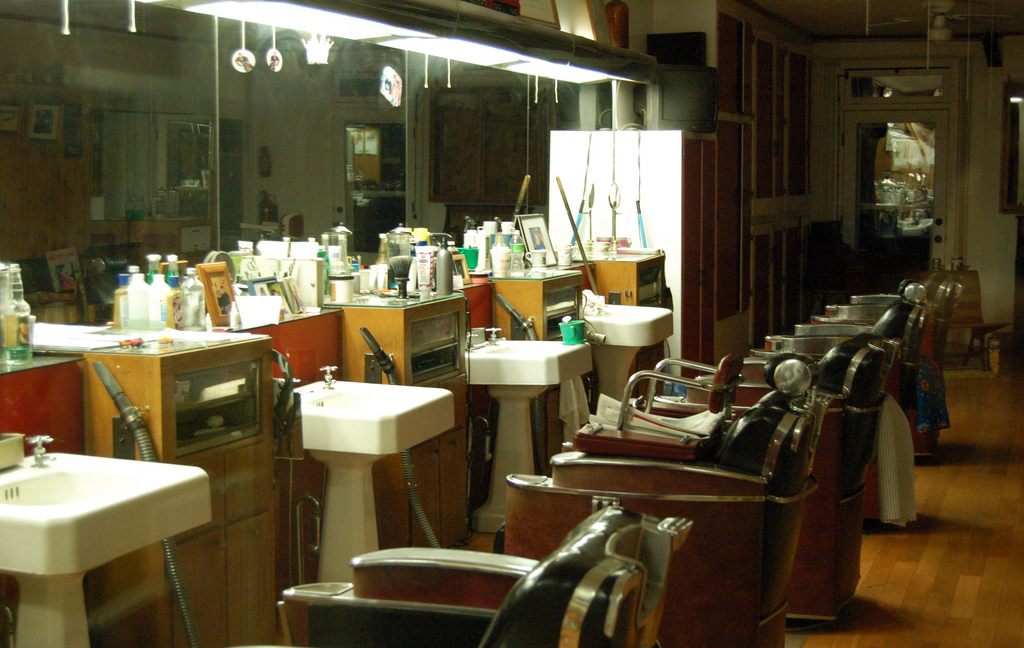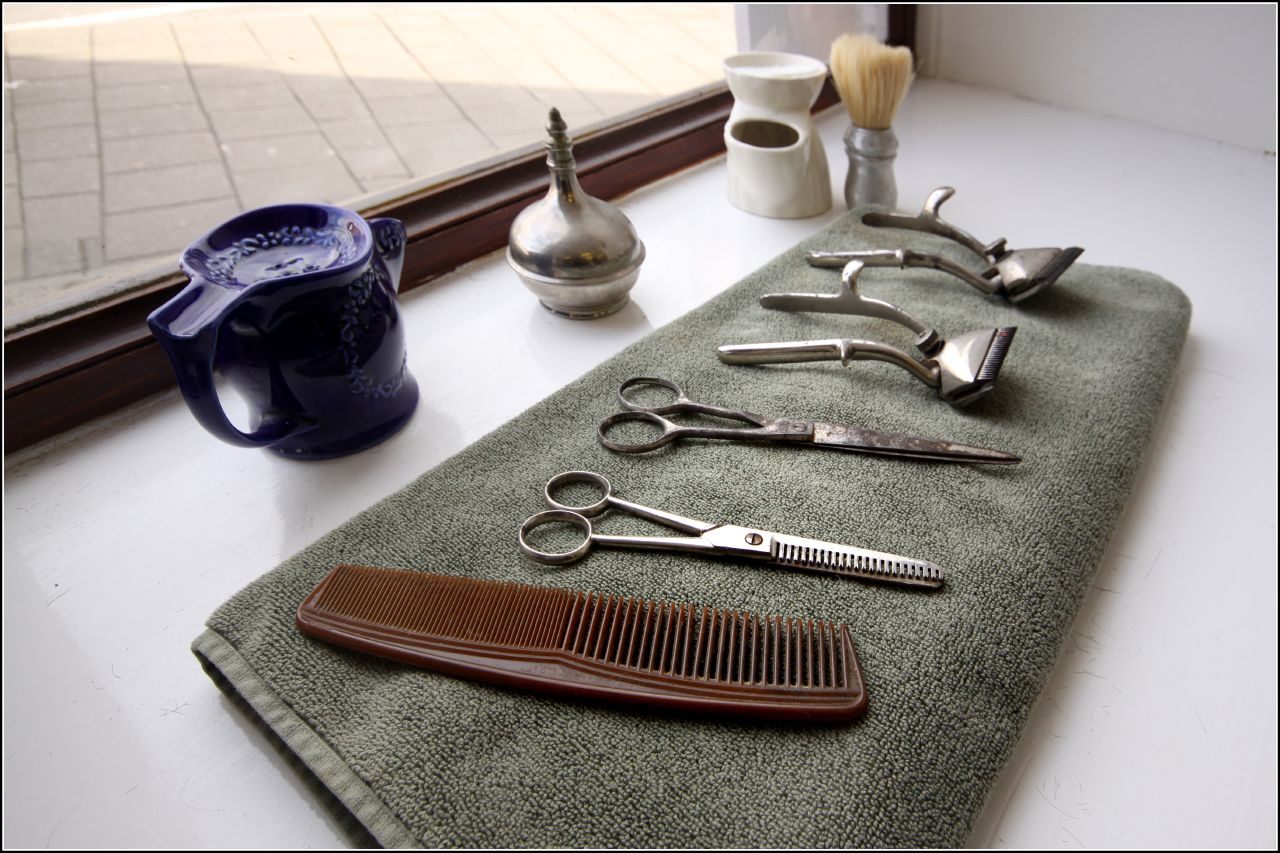The Curious Reasons Why Barber Shops Don’t Take Credit Cards

A barber shop pole. (Photo: George P. Choma/flickr)
A version of this post originally appeared on the Tedium newsletter.
If you find yourself in a mom-and-pop barber shop or hair salon of any kind, you might find a common (but annoying) state of affairs in play.
Despite the fact that basically every other store on the block accepts credit cards, the barber shop is often the lone holdout on that front, forcing consumers who may have otherwise stopped paying cash for most things long ago to hit up the ATM.
All told, around 80 percent of consumer spending in the United States is done without cash, according to MasterCard. But why not many independently-run barber shops?

Many barbershops still only take cash. (Photo: Carl Lender/flickr)
The reasons vary, but, put simply, the economics of being a barber are less like running an ordinary retail store than you’d imagine.
Most barber-shop employees, for example, are treated less like full-time staff and more like taxi drivers or freelance employees, and most are required to either rent out a chair for a flat fee each month or pay a significant share of their earnings to the salon owner. Many work as independent contractors, in other words, and would more acutely feel the pain of accepting credit cards than CVS or Old Navy might, due to cards’ often high transaction fees. (Square, for example, charges vendors a processing fee of 2.75 percent for credit cards, which, for barbers, can mean thousands of dollars less in earnings on an annual basis.)
Barbers also don’t make that much money to begin with. Doing some quick barbershop math here: If you charge $20 for your average haircut and do about 15 haircuts per day, five days a week, that’s $1,500 a week, or $6,000 per month. Let’s say that you’re working a commission deal with the barber shop at a 60/40 split—so the breakdown for you is that you’re getting 60 percent of $72,000.
You’ll most likely get tips, and you’ll have slow and busy days, but if we go for an average of 15 people per day, you’re making $43,200 per year, before taxes and not counting the cost of supplies. (And that may be a little on the high end of things; the Bureau of Labor Statistics puts the average barber wage at $28,800 per year.)

The essentials of the trade. (Photo: Ben Salter/flickr)
Another reason for not taking credit cards is less spoken: dealing in cash makes it easier to avoid paying taxes.
“Tax evasion is relatively common, especially among both-rental salon workers,” Angela Barlow and James Hawdon wrote in a 2015 paper entitled “Sex, Drugs, and Deception: Deviance in the Hair Salon Industry”. “For example, to avoid paying costly payroll taxes on one or two employees, owners will sometimes make arrangements with the employees to pay them a higher wage in exchange for keeping things ‘under the table’ or for accepting a subcontractor form 1099 at the end of the year that defines the employee as working on a peer-job basis.”
One thing for barber shops to consider, however, is the number of customers who walk out after finding out that they can’t charge their haircut, perhaps not wanting to be on the hook for more charges at the no-name ATM in the corner. And if accepting credit cards means that barber shops get just one more haircut a day, barber shops could be losing money by sticking to cash only. When it comes to credit cards, in other words, the customers might just be right.
A version of this post originally appeared on Tedium, a twice-weekly newsletter that hunts for the end of the long tail.








Follow us on Twitter to get the latest on the world's hidden wonders.
Like us on Facebook to get the latest on the world's hidden wonders.
Follow us on Twitter Like us on Facebook